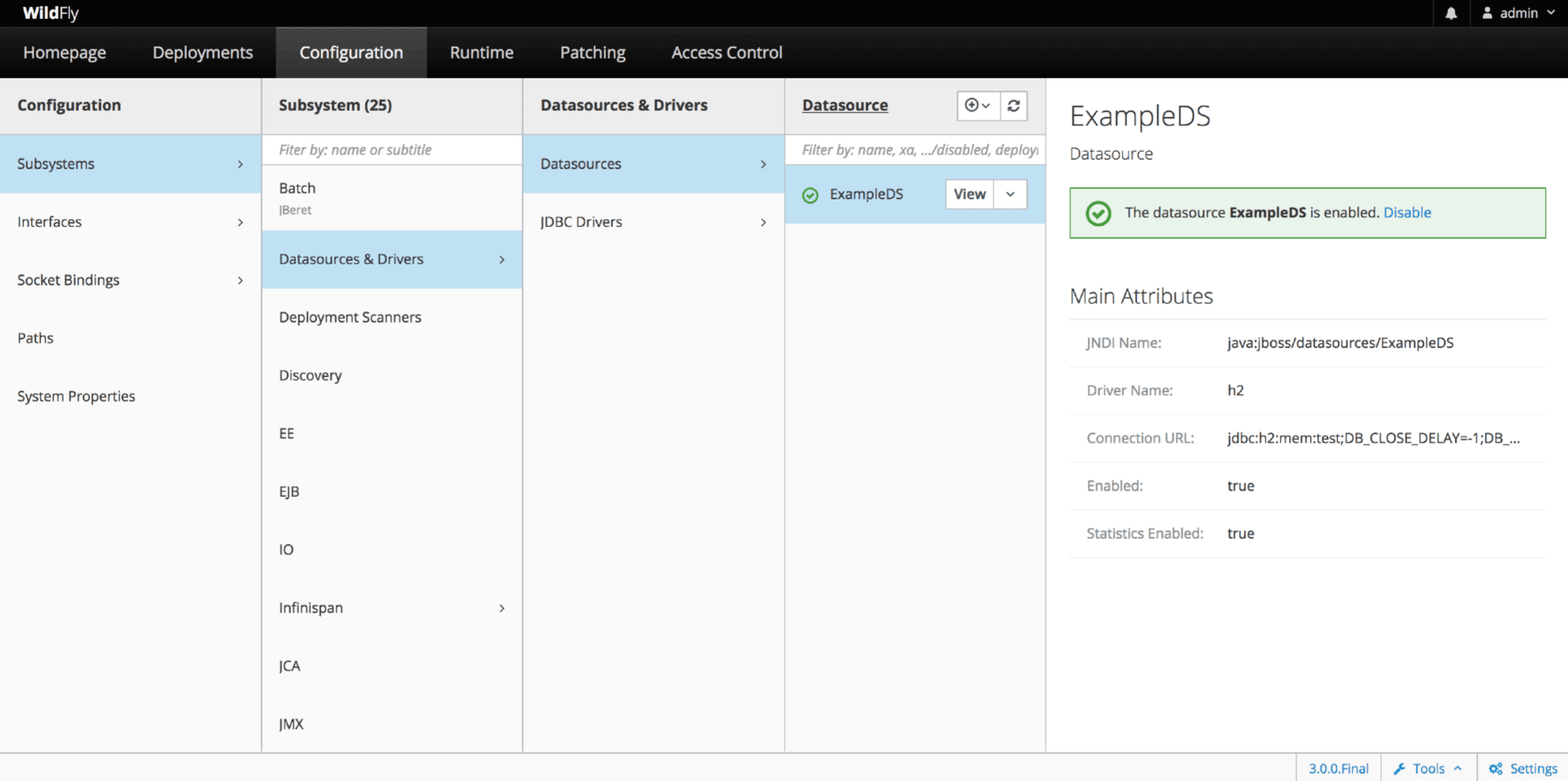WildFly is now available

WildFly is a powerful, modular, & lightweight application server that helps you build amazing applications.
Powerful
Configuration in WildFly is centralized, simple and user-focused. The configuration file is organized by subsystems that you can easily comprehend and no internal server wiring is exposed. All management capabilities are exposed in a unified manner across many forms of access. These include a CLI, a web based administration console, a native Java API, an HTTP/JSON based REST API, and a JMX gateway. These options allow for custom automation using the tools and languages that best fit your needs.
Modular
WildFly does classloading right. It uses JBoss Modules to provide true application isolation, hiding server implementation classes from the application and only linking with JARs your application needs. Visibility rules have sensible defaults, yet can be customized. The dependency resolution algorithm means that classloading performance is not affected by the number of versions of libraries you have installed.
Lightweight
WildFly takes an aggressive approach to memory management. The base runtime services were developed to minimize heap allocation by using common cached indexed metadata over duplicate full parses, which reduces heap and object churn. The administration console is 100% stateless and purely client driven. It starts instantly and requires zero memory on the server. These optimizations combined enable WildFly to run with stock JVM settings and also on small devices while leaving more headroom for application data and supports higher scalability.
Standards Based
WildFly implements the latest in enterprise Java standards from Jakarta EE and Eclipse MicroProfile. These improve developer productivity by providing rich enterprise capabilities in easy to consume frameworks that eliminate boilerplate and reduce technical burden. This allows your team to focus on the core business needs of your application. By building your application on standards you retain the flexibility to migrate between various vendor solutions.
Latest News
WildFly 20.0.1.Final is now available for download. It’s been about a month since the WildFly 20 release, so it’s time for a small bug fix update, WildFly 20.0.1. The full list of issues resolved in WildFly 20.0.1 is available here. Issues resolved in the WildFly Core 12.0.2 and 12.0.3 releases included with WildFly 20.0.1 are available here and here. Onward to WildFly 21! Enjoy.
Read More >Congratulations to the Jakarta EE community for the recent great progress on Jakarta EE 9! The Jakarta EE community has been making great strides in its work on Jakarta EE 9, and given today’s Jakarta EE 9 milestone release I wanted to give the WildFly community an update on what’s been going on regarding EE 9 in WildFly and a heads up on what I expect will be happening over the summer and the rest...
Read More >I am pleased to announce the 1.0.0.Beta1 release of the MicroProfile Reactive specifications feature pack for WildFly. It offers experimental support for the following MicroProfile specifications, which all focus on the reactive area: MicroProfile Reactive Messaging 1.0 - this is a framework for building event-driven, data streaming and event sourcing applications using CDI. The streams, or channels, can be backed by a variety of messaging technologies. We currently ship connectors for: Apache Kafka, AMQP and...
Read More >Introduction Now that WildFly supports Eclipse Microprofile this seems the appropriate time to introduce a way to package a WildFly application as a bootable JAR (also known as a "fat JAR"). Bootable JAR packaging is well suited for microservices to be run on cloud and bare metal. A bootable JAR allows us to package both the container and the application in a single JAR file and execute it with a simple command such as java...
Read More >WildFly 20 S2I Docker images The WildFly S2I (Source-to-Image) builder and runtime Docker images for WildFly 20 have been released on quay.io/wildfly. Changes since the last release: Upgraded Keycloak client adapters to version 10.0.2. Reduced the size of the image generated during s2i chained build template (image named <app>-build-artifacts). For a complete documentation on how to use these images using S2I, OpenShift and Docker, refer to the WildFly S2I README. Adding the imagestreams and template...
Read More >Using JBoss Generic JMS Resource Adapter you can use a JMS compatible client to connect WildFly to any broker. This article will describe how to do this with Apache Qpid and thus use JMS over AMQP. Installing Apache Qpid You need to download and untar Apache Qpid Broker-J 8.0.0 from https://qpid.apache.org/download.html. You need to allow for anonymous access. Please use the initial-config.json configuration file. Note that we will start Apache Qpid HTTP server on 9080...
Read More >WildFly 19.1.0 Final is now available for download. As we usually do between WildFly majors, we’ve done an update release to provide the WildFly community with important bug fixes and component upgrades that have become available. Typically these are micro releases, but this time we had one feature that we wanted to make available, so we changed the version to 19.1.0 and released a minor. The feature is related to handling of SameSite cookie attributes....
Read More >Introduction The standard and recommended way to configure the WildFly cloud images is by using environment variables. However, you could find it useful for your use case to configure the server by using a custom CLI management operations script. The following post describes how you can apply management operations to configure the WildFly server image. We will show you how you can execute CLI scripts at the Source-to-Image (S2I) phase and how to use the...
Read More >